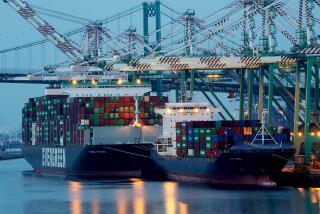We Must Switch to Renewable, Clean Power
- Share via
The East Coast blackout last week offers California a valuable lesson in how to improve our own electric system, beginning with the Los Angeles Department of Water and Power.
As the analysis of this latest blackout unfolds, California should be weary of false solutions put forward by the utility industry.
The solution to our energy problems, East Coast, West Coast and between, is greater energy efficiency and conservation, more renewable energy and a shift to clean, localized power generation.
Shortly after the blackout occurred, East Coast industry executives said the problem was that transmission lines were not big enough and that there weren’t enough power plants. The solution, these industry officials argue, is to further deregulate the industry and to build more power plants and transmission lines.
This couldn’t be further from the truth.
Unfortunately, the Los Angeles Department of Water and Power’s message is no different from those of utilities on the East. Shortly after the blackout hit, the department announced that the city was immune to such problems because of the utility’s independence from the Western electric power grid. Another far cry from reality.
The problem with the East’s electric grid is largely the same one we face in California: an overly centralized system dependent on large fossil fuel and nuclear power plants.
Los Angeles, for example, relies on coal plants in Utah, Arizona and Nevada to generate half of its electricity. An additional 12% of Los Angeles’ electricity comes from the Palo Verde nuclear power plant in Arizona, and 25% comes from natural gas plants in Los Angeles.
The ultimate solution is a stronger emphasis on energy conservation and efficiency, a greater investment in clean, renewable energy and a modernization plan that is based on bringing about more ultraclean, local power sources.
By reducing our demand through efficiency and conservation, we lighten the load, stabilize the grid and negate the need to build more power plants and infrastructure.
By increasing our use of clean, renewable energy such as wind, geothermal and biogas resources, we infuse the grid with technologies that are immune to fuel shortages, price fluctuations and manipulation.
Finally, by modernizing the grid with energy technologies such as photovoltaic systems, fuel cells and industrial waste heat, we can truly realize a 21st century energy system.
Los Angeles’ DWP lags far behind the rest of the state in its use of renewable energy. Barely 3% of the city’s energy comes from renewable resources, compared with a 12% statewide average.
Further, because of a new state law, California’s other utility companies must increase their use of renewable energy to 20% by 2017, and the state’s three energy agencies have called on the utilities to meet this goal by 2010.
Unknown to most, DWP officials exempted themselves from this law and, while they drag their feet on coming up with their own clean-energy goals, are expanding their fossil fuel power plants and slashing funding for energy-efficiency programs.
This is clearly the wrong direction for the city.
Mayor James K. Hahn and the Los Angeles City Council need to recognize the teachable moment that exists as a result of the East Coast blackout and step in to lead the city toward greater energy security, environmental responsibility and a truly modernized energy system.
A cleaner, less cumbersome system that recognizes the economic value of conservation and efficiency and puts an emphasis on smaller, cleaner and more local generation sources is the true solution.
More to Read
Inside the business of entertainment
The Wide Shot brings you news, analysis and insights on everything from streaming wars to production — and what it all means for the future.
You may occasionally receive promotional content from the Los Angeles Times.










